- mbow
- mgrr
- lbpmp
- mwlblb
- mlbob
- morlb
- mpbw
- mwrg
- mlbrg
- mrgo
- mwbw
- unbanded: Rusty Bill
- mlbbb* female
- gbmg*
- rrmo
- unbanded juveniles (2)
- banded juvenile
Notes:
Activity at the feeder has resumed with lots of visitors today. lbpmp arrived with a deep puncture wound on the left side of her head. It looks clean without any sign of blood or infection, though the edges gape and I'm surprised she is behaving normally. She is flying, feeding, and rattling as usual. My first thought was she'd been attacked by another bird, though Jeff J. suggested it could be a pellet gun injury. I will watch her carefully and have notified Pia by e-mail.
Two new birds arrived today: mlbbb, a female; and gbmg, last year's juvenile. They, like mpbw, make very quick flurries in, take time to grab only one peanut and fly straight up and out with a bound. Strangers still, they lack the bold qualities of those birds who have been around awhile.
Yesterday, Red Eye, the boldest of the bold, discovered the whole bag of peanuts inside my bedroom door. A hot muggy day, I'd left the sliding glass door open. He pecked into the plastic bag with sharp jabs of his bill until he opened a hole large enough to extract peanuts directly from the bag. He'd drop a few on the floor, take one, and then fly off. The other birds caught on quickly, feeling quite at home to hop into the room, tap the bag and steal away with nuts. This morning, birds were lined up, outside my bedroom window, eying the bag, waiting for me to get up and feed them.






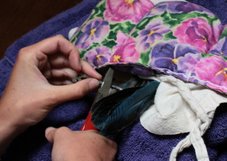

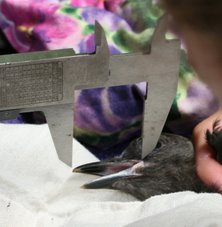


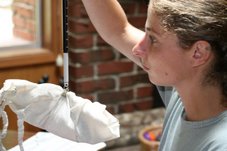









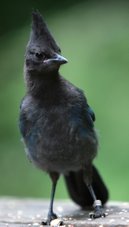










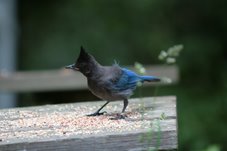











2 comments:
That must have been quite a sight!
Thank you for the errata about lbpmp, Catherine. I feel better about her knowing the hole drilled in her head is, very likely, just her ear.
Now if I could only resolve the troubling mental picture of legs swollen by mites. . . . .
Softie Duckart
Post a Comment